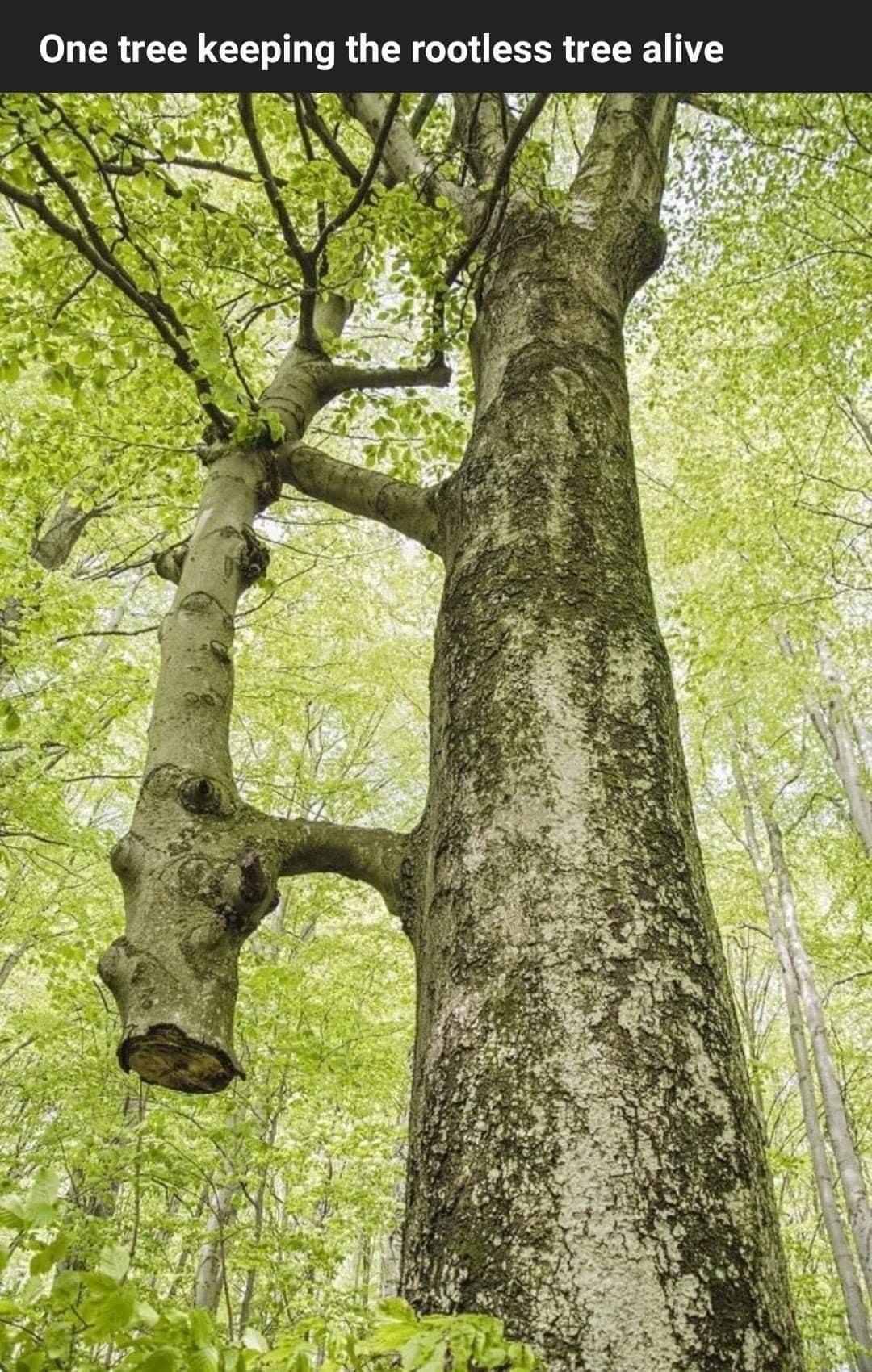
Ooh ooh ooh! This looks like an excellent excuse valid reason to talk about one of my favorite topics, matriarch trees!
So, when you see trees in a forest, they stick up outta the ground, some distance from each other, and you're like 'these are unconnected critters,' right? But! The thing is! Just like the trees in the picture are connected above-ground, trees in a forest are normally connected below-ground. There's this whole complicated thing involving a symbiotic relationship with fungi, but we're gonna simplify it to this: trees connect to each other through their root systems.
And they use it to share resources, across the whole forest.
If there's a tree over here growing in soil with a lot of, like, potassium, they'll pull up more potassium than they need, and send it out through the root system to other trees that are living where there isn't much potassium.
And one of the coolest things? Trees communicate their needs. If a tree is sick or damaged or starving, they send chemical messages out through the root system that tell the other trees to send them more food and tree-equivalent-of-immune-system.
Trees will share so much of their resources, they'll even keep trees alive that are almost entirely dependent. Like this tree! The tree above is getting some energy from its leaves, but no other nutrition of its own. And it wasn't able to link up to the shared root system. So the other tree reached out and hooked up to it directly, feeding it all of the nutrients it needed!
You see it more commonly the other way around: in an old-growth forest, where the roots are well-established, you can find stumps where a tree was cut down a century ago... but if you scrape the stump it's still green wood. The tree's still alive, without a single leaf. Because all the other trees in the forest are feeding it.
I promised to talk about matriarch trees, so here's where we get to them.
In a very old forest, you have very old trees. You have some trees that are so very, very old, their own roots cover entire regions of the forest. Their leaves reach up to the sky over everyone else. And after so long, they've developed to where they can take in way more resources than they need.
So what do they do?
They feed baby trees.
Baby saplings in an old forest can't reach up to the sun. There's no light down there. And their roots are too small and shallow to dig down to the nutrients they need. So the matriarch tree will draw energy from its towering canopy, and nutrients from its massive, ancient roots, and feed them to the little trees that are too small to feed themselves. For anything she can't get on her own, she'll act as a central hub, taking in spare resources from the rest of the forest and giving them to the little ones.
And one of the best parts - she won't just do it for her own species. She'll connect to all kinds of trees, because they're all necessary for the ecosystem to work. She'll adopt the whole forest's children.
Sometimes in forests you'll find a spot where there are a lot of small trees in an open space around an old, fallen tree. People generally assume they could find more light there, or maybe the soil's more fertile from the decomposition.
But no.
They're her children, and she's spent centuries keeping the whole forest alive.
